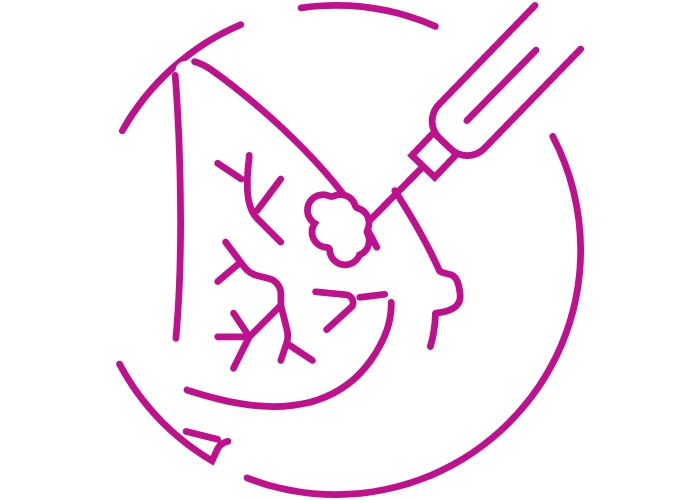Septoplasty vs Rhinoplasty: Key Differences | Which One is Helpful for You
Introduction
When it comes to nasal surgeries, people often find themselves tangled in a web of medical jargon and confusing terms. Two procedures that commonly arise in conversations, especially when discussing the differences between Septoplasty and Rhinoplasty. While they both involve your nose, they serve different purposes. Septoplasty focuses on improving function, typically addressing breathing issues. On the other hand, rhinoplasty is primarily cosmetic, all about enhancing the nose’s appearance. Let’s delve deep into the details of the difference between the two procedures!
Understanding Septoplasty vs Rhinoplasty
When it comes to nasal surgeries, septoplasty is one of the common procedures you’ll likely hear about. It is primarily focused on addressing issues within the nose, specifically targeting the septum. It is important to know what the septum is before we dive deeper. It’s the wall of cartilage and bone that divides the nostrils. Now, let’s explore what the procedure entails and why someone might need a septoplasty.
Purpose of Septoplasty
The main goal of septoplasty is to correct a deviated septum. But what’s a deviated septum? It’s when the septum is displaced or off-center, which can lead to breathing difficulties, snoring, or even sleep apnea. Think of it as living in a house where the most important hallway is twisted—it’s tough to get around!
Beyond breathing issues, a deviated septum can also contribute to recurrent sinus infections and headaches. So, while septoplasty is primarily functional, improving your quality of life by helping you breathe easier is its top priority.
The Septoplasty Procedure
So, here’s a straightforward way to look at what actually happens during a septoplasty?
– Pre-surgery Consultation: Your journey will begin with a visit to an ENT specialist or a plastic surgeon. They’ll assess your nose using tools like nasal endoscopy and possibly imaging studies. The goal here is to understand the extent of the deviation.
– The Surgery: Think of it as a “straightening” job for your septum. During the surgery, which typically takes around 60 to 90 minutes, you’ll be under general or local anesthesia. The surgeon will make incisions inside the nose to access the septum, remove any obstructive tissue, reshape the septum, and reposition it in the right place.
– Recovery Time: Post-surgery, you can expect to wear a small protective splint or pack inside your nose for a few days. Most people experience some swelling and discomfort, but after a week or two, you’ll start to notice a difference in breathing and overall nasal function.
Exploring Rhinoplasty
On the other side of the spectrum, there’s rhinoplasty. Unlike septoplasty, rhinoplasty is often associated with cosmetic changes. It’s the go-to option for those looking to alter the appearance of their nose. Nevertheless, aesthetic improvement isn’t the sole objective of rhinoplasty. Let’s dive into the objectives and the benefits of this sought-after surgery.
Objectives of Rhinoplasty
Rhinoplasty, also known as a “nose job,” works on both form and function. Here are the primary objectives:
– Cosmetic Alterations: People may seek rhinoplasty to change the size or shape of the nose, including the tip, bridge, or nostrils.
– Functional Improvements: Those dealing with breathing issues due to structural problems might also turn to rhinoplasty for relief, especially if they’ve experienced trauma or injury to the nose.
– Self-confidence Boost: A large part of rhinoplasty is about helping individuals feel more comfortable and confident in their skin.
Whether someone wants a subtle tweak or a dramatic transformation, the objectives vary widely based on personal goals.
Also Read: Rhinoplasty Cost in Delhi
Cosmetic Benefits of Rhinoplasty
Rhinoplasty offers a range of aesthetic benefits, making it incredibly popular. Some of these benefits include:
– Balance and Symmetry: Modifying the nose can bring harmony to facial features, balancing out the proportions.
– Profile Enhancement: A well-performed nose job can enhance and define the side profile, often smoothing out bumps or drooping.
– Nasal Tip Modification: Changing the shape or width of the nasal tip can lead to a more refined appearance.
While the focus here is on looks, remember that confidence and the psychological benefits of being satisfied with one’s appearance shouldn’t be underestimated.
The Rhinoplasty Process
Curious about what the rhinoplasty journey entails? Let’s break it down:
– Initial Consultation: Your first step will be meeting with a plastic surgeon who specializes in rhinoplasty. At this stage, you’ll discuss your goals, review your medical history, and the surgeon will evaluate your facial structure.
– The Surgical Procedure: Depending on the specifics, the surgery can last anywhere from 1 to 3 hours. Rhinoplasty can be performed using two common techniques: open or closed rhinoplasty.
– Open Rhinoplasty: An incision is made on the columella, the tissue that separates your nostrils. This method provides greater visibility and access.
– Closed Rhinoplasty: Incisions are made within the nostrils. It’s less invasive and results in no visible scarring.
– What Happens After?: Post-surgery, you’ll need to wear a splint to help maintain the new shape during healing. Expect some swelling and bruising that can last several weeks, but most people are back to a regular routine in about two weeks.
In summary, whether you’re aiming to breathe better or simply want to feel more at ease with your looks, there’s a nasal surgery that’s right for you. Both septoplasty and rhinoplasty offer valuable solutions—knowing their differences can help you make the best decision for your personal needs.
Key Differences Between Septoplasty and Rhinoplasty
When it comes to nose surgeries, understanding the differences between septoplasty and rhinoplasty can help you make informed decisions about your health or cosmetic goals. These surgeries may sound similar, but they serve distinct purposes and involve unique procedures. Let’s break it down for a better understanding!
Functional vs. Aesthetic Goals
The primary difference between septoplasty and rhinoplasty lies in their objectives:
Septoplasty: This surgery is all about function. If you struggle with breathing due to a deviated septum – that’s the cartilage dividing your nostrils – septoplasty might be your answer. The goal here is to straighten the nasal passage to improve airflow, making breathing easier, especially for those who suffer from chronic nasal congestion or obstructive sleep apnea.
– Rhinoplasty: This procedure is often pursued for cosmetic reasons. Whether you’ve been dreaming of a smaller, more proportionate nose, or simply want to correct a bump on the bridge, rhinoplasty is performed to alter the shape and appearance of your nose. While it can improve breathing in some cases, its primary focus is on aesthetics.
Recovery and Aftercare
Both septoplasty and rhinoplasty involve surgical intervention and require careful recovery and aftercare:
– Septoplasty Recovery: Generally, the recovery from septoplasty is quicker and less uncomfortable compared to rhinoplasty. Patients might experience swelling, minor pain, or nasal obstruction as they heal. It typically takes a few weeks for the nose to fully recover, allowing you to breathe more freely over time.
– Rhinoplasty Recovery: This can be more involved due to the cosmetic reshaping. Expect bruising and swelling, particularly around the nose and under the eyes. The external appearance improves significantly within a few weeks, but full recovery and settling of the new shape can take up to a year.
Considerations for Choosing the Right Surgery
When deciding between septoplasty and rhinoplasty, consider the following:
– Breathing Issues: If your primary concern is difficulty breathing due to structural issues, septoplasty might be the right choice.
– Appearance Concerns: Opt for rhinoplasty if you’re looking to enhance the size, shape, or symmetry of your nose.
– Consultation: It’s crucial to have a detailed consultation with your surgeon. They can provide insight into whether your desired outcomes are possible with one procedure or a combination of both.
– Risk Assessment: Discuss potential risks and benefits with your doctor to ensure that you’re making a choice aligned with your health needs and lifestyle.
In summary, determining the right surgery involves weighing your needs for functional improvement against aesthetic enhancement. Understanding these differences helps set realistic expectations and guides you to making the best decision for your health and confidence!
Conclusion
In summary, while both septoplasty and rhinoplasty are nasal surgeries, they serve distinct purposes. Septoplasty is primarily aimed at correcting breathing problems by realigning a deviated septum. On the other hand, rhinoplasty is focused on changing the appearance of the nose for cosmetic reasons.
Whether your concern is functional or aesthetic, it’s essential to consult with a qualified surgeon. Understanding the differences between these two procedures can help you make an informed decision about your surgical options.
Why Choose Vanya Clinic ?
Vanya Clinic – Aesthetics & ENT, is known to be the best clinic for plastic surgery in Delhi & ENT doctor in Delhi. The dual speciality clinic is led by two doctors Dr. Anil Kumar Kaler & Dr. Purodha Prasad. Both MBBS doctors have huge practice & surgical experience at various esteemed organizations in New Delhi, India.
Dr. Anil Kumar Kaler leads the Plastic surgery & Aesthetics section. He has more than 12+ years of experience in Reconstructive & Cosmetic surgeries in New Delhi. He is ranked among top 5 Plastic surgeons in New Delhi. He is an expert Rhinoplasty surgeon in Delhi. In addition, he has a very good surgical experience in Liposuction surgery & Gynecomastia surgery in Delhi, India. Dr. Purodha Prasad takes care of the ENT department with expert surgical experience in Ear, Nose & Throat treatment in New Delhi. She is the best MBBS MS ENT Doctor in South Delhi with over 12+ Years of experience.




